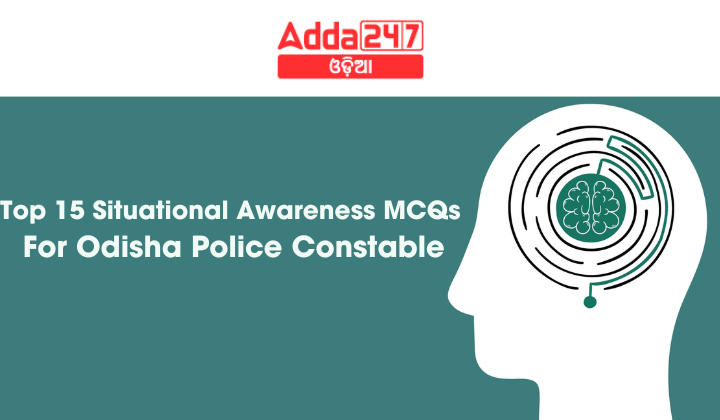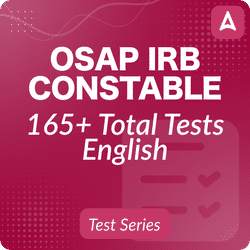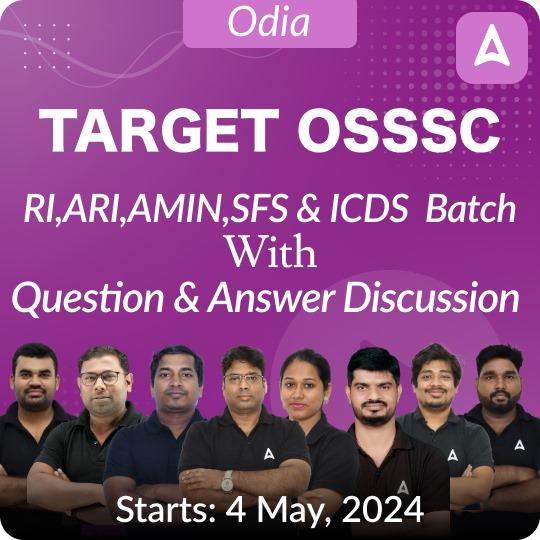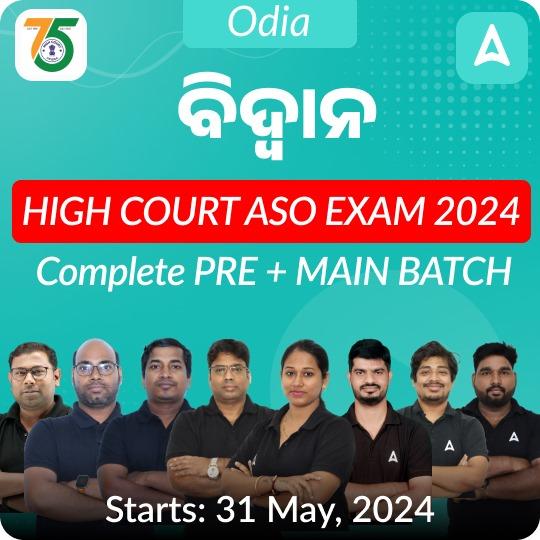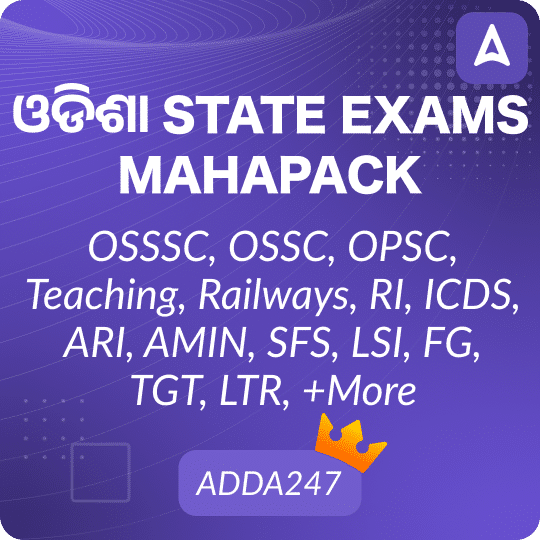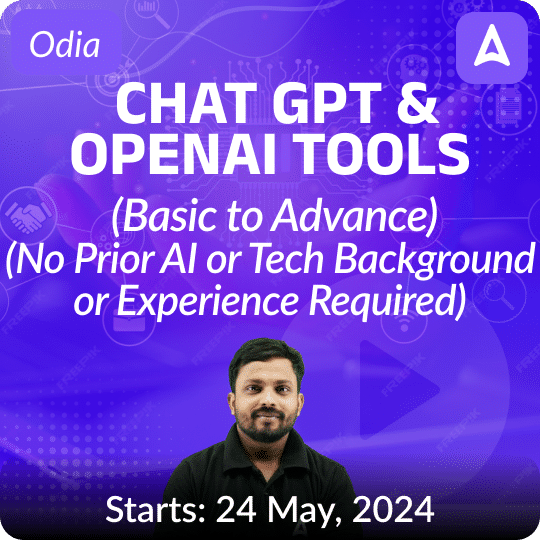Situational Awareness refers to the ability to understand, assess, and respond to situations appropriately, especially in stressful or high-stakes environments. For Odisha Police Constables, situational awareness is a key skill to handle emergencies, respond to crimes, and ensure public safety. Here are the top 15 multiple-choice questions (MCQs) that could help candidates prepare for the Odisha Police Constable exam, focusing on situational awareness and decision-making.
Top 15 Situational Awareness MCQs For Odisha Police Constable 04 November 2024
Q1. While patrolling at night, you hear suspicious noises coming from a dark alley. What should be your immediate response?
(a) Walk away and ignore it
(b) Shine your flashlight and investigate the source
(c) Call for backup immediately without checking
(d) Alert nearby shops to close
S1. Ans: (b) Shine your flashlight and investigate the source
Sol: Investigating cautiously is important to assess potential risks while avoiding direct confrontation if the situation is unsafe.
Q2. During a patrol, you notice a person acting nervously near a public gathering. What is your next step?
(a) Confront them immediately
(b) Monitor their behavior closely from a safe distance
(c) Ignore them and continue patrolling
(d) Call for backup without further assessment
S2. Ans: (b) Monitor their behavior closely from a safe distance
Sol: Observing unusual behavior from a distance helps you assess if the person poses a threat before deciding on further action.
Q3. In a crowded area, you see an unattended bag. What is your first action?
(a) Pick up the bag and move it
(b) Report it to higher authorities immediately
(c) Ask people around if it belongs to them
(d) Create a perimeter and investigate cautiously
S3. Ans: (d) Create a perimeter and investigate cautiously
Sol: Establishing a safe distance and investigating is crucial to protect civilians in case of a potential threat.
Q4. While on duty, you receive information about a possible crime in progress nearby. What should be your first move?
(a) Head directly to the location without backup
(b) Notify the nearest officer and proceed to the location
(c) Wait for more information
(d) Call your superior and avoid involvement
S4. Ans: (b) Notify the nearest officer and proceed to the location
Sol: Informing others and responding promptly helps ensure that assistance is available if needed.
Q5. You see a group of people arguing heatedly at a public event. What would be your first approach?
(a) Shout to break up the argument
(b) Approach calmly and ask what the issue is
(c) Call for backup immediately
(d) Ignore them and continue observing
S5. Ans: (b) Approach calmly and ask what the issue is
Sol: Approaching calmly can de-escalate the situation and help prevent further conflict.
Q6. While patrolling, you come across a person who appears disoriented. What should you do first?
(a) Arrest them immediately
(b) Ignore them and move on
(c) Approach them to see if they need help
(d) Call for backup
S6. Ans: (c) Approach them to see if they need help
Sol: Engaging with the individual respectfully can reveal if they need assistance, rather than assuming they are a threat.
Q7. You notice someone following you during your patrol. What is your best course of action?
(a) Confront them directly
(b) Alert another officer and maintain awareness of their actions
(c) Run away
(d) Shout at them to stop
S7. Ans: (b) Alert another officer and maintain awareness of their actions
Sol: Being aware and notifying others ensures you have support if the situation escalates.
Q8. In a large crowd, you hear someone shouting aggressively. What should you do?
(a) Ignore it
(b) Locate the source and assess the situation
(c) Push through the crowd to confront the person
(d) Call for backup immediately
S8. Ans: (b) Locate the source and assess the situation
Sol: Determining the source helps you evaluate whether it’s a potential threat or just a minor disturbance.
Q9. You observe someone loitering around a locked shop late at night. What would you do first?
(a) Confront the person
(b) Monitor their activity from a distance
(c) Leave the area
(d) Shout at them to move away
S9. Ans: (b) Monitor their activity from a distance
Sol: Observing first allows you to assess if the person is a potential threat before taking further action.
Q10. During patrol, you see a child crying alone on the street. What should you do?
(a) Assume the child is lost and leave
(b) Approach the child and ask if they need help
(c) Call for backup
(d) Ignore the child
S10. Ans: (b) Approach the child and ask if they need help
Sol: Offering help can ensure the child’s safety and determine if they need further assistance.
Q11. While on duty at a festival, you notice someone behaving suspiciously near the main stage. What is your next step?
(a) Confront the person aggressively
(b) Keep an eye on them and observe their actions
(c) Move to a different location
(d) Report it to another officer immediately
S11. Ans: (b) Keep an eye on them and observe their actions
Sol: Observing allows you to assess if the behavior poses a real threat before deciding on further actions.
Q12. You’re patrolling near a bank and notice a man pacing nervously outside. What should you do?
(a) Ignore him
(b) Approach and ask if he needs assistance
(c) Call for immediate backup
(d) Enter the bank to report him
S12. Ans: (b) Approach and ask if he needs assistance
Sol: Engaging the individual can clarify whether he needs help or is acting suspiciously.
Q13. If you see two individuals exchanging items suspiciously, what is your first response?
(a) Stop them immediately
(b) Observe their behavior closely before taking action
(c) Walk away
(d) Call for backup immediately
S13. Ans: (b) Observe their behavior closely before taking action
Sol: Observing first helps confirm if illegal activity is taking place before intervening.
Q14. During an investigation, you sense something out of place in a suspect’s home. What should be your immediate action?
(a) Ignore it
(b) Document your observations and investigate cautiously
(c) Leave the house
(d) Touch everything to check for clues
S14. Ans: (b) Document your observations and investigate cautiously
Sol: Documenting details can help build evidence, while caution ensures your safety.
Q15. You’re monitoring CCTV and see a person repeatedly entering and exiting a restricted area. What should you do?
(a) Ignore it
(b) Send a patrol to investigate
(c) Lock the area remotely
(d) Sound the alarm immediately
S15. Ans: (b) Send a patrol to investigate
Sol: Investigating allows confirmation of whether the person poses a security risk.

